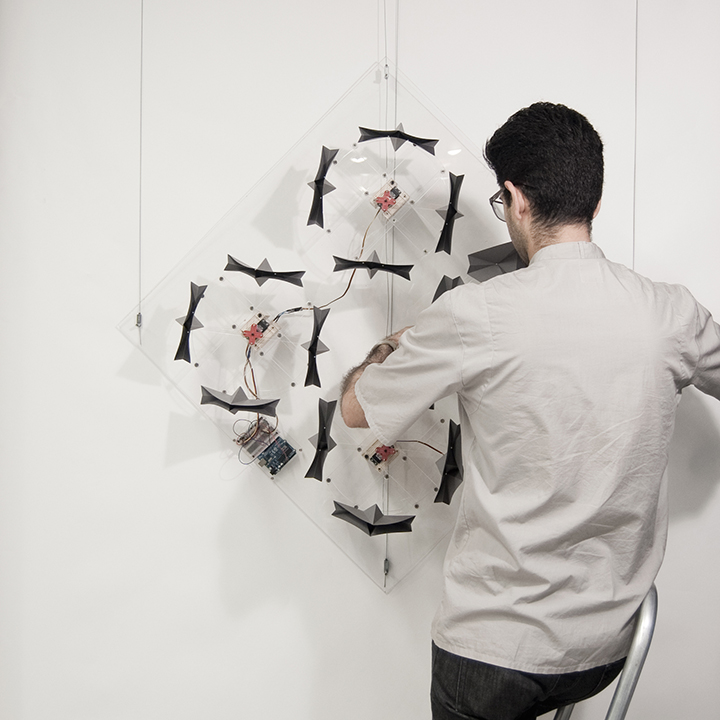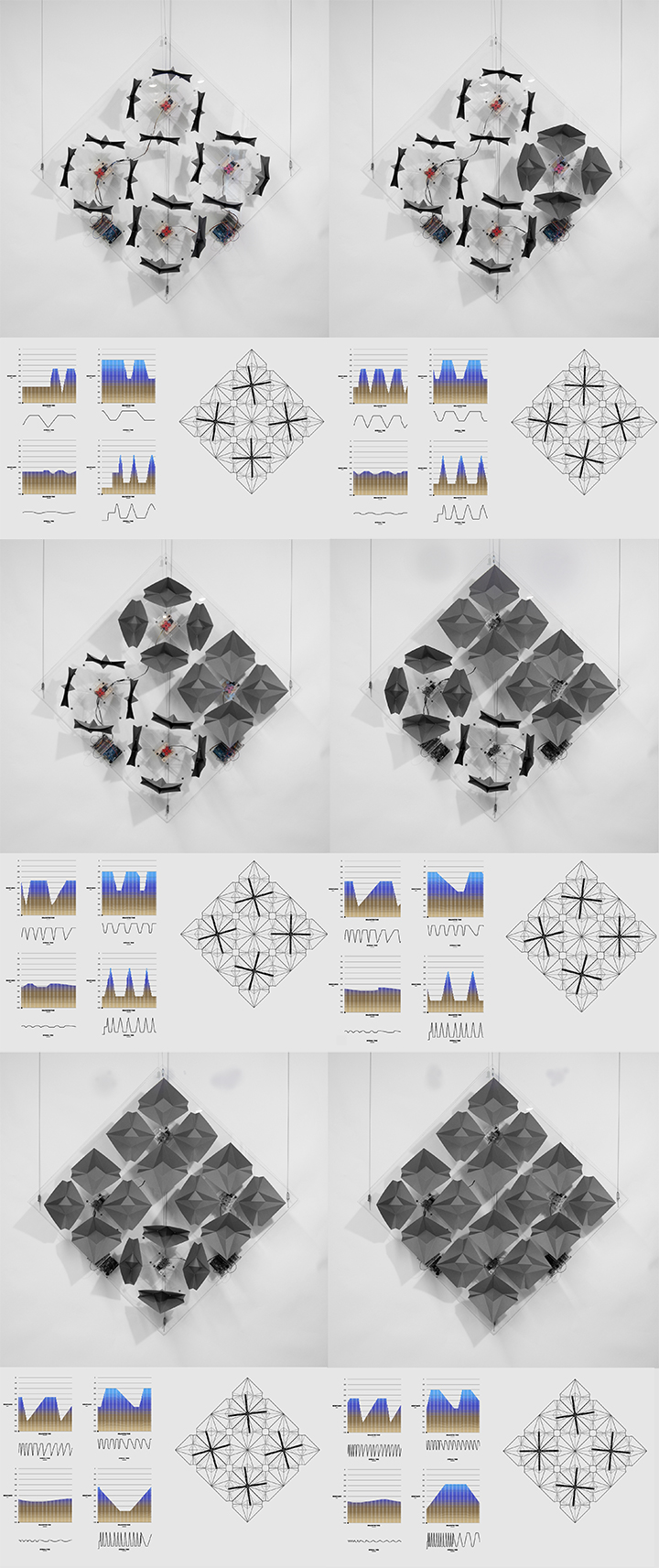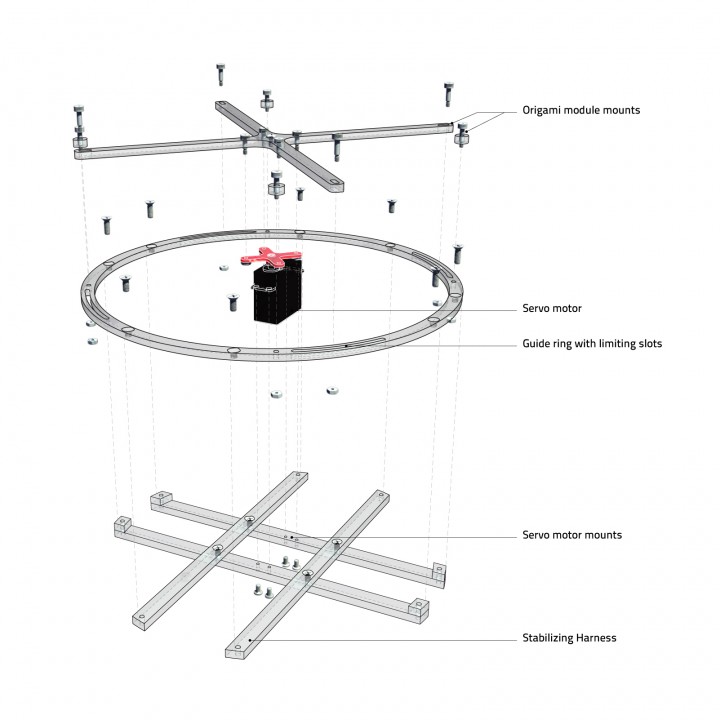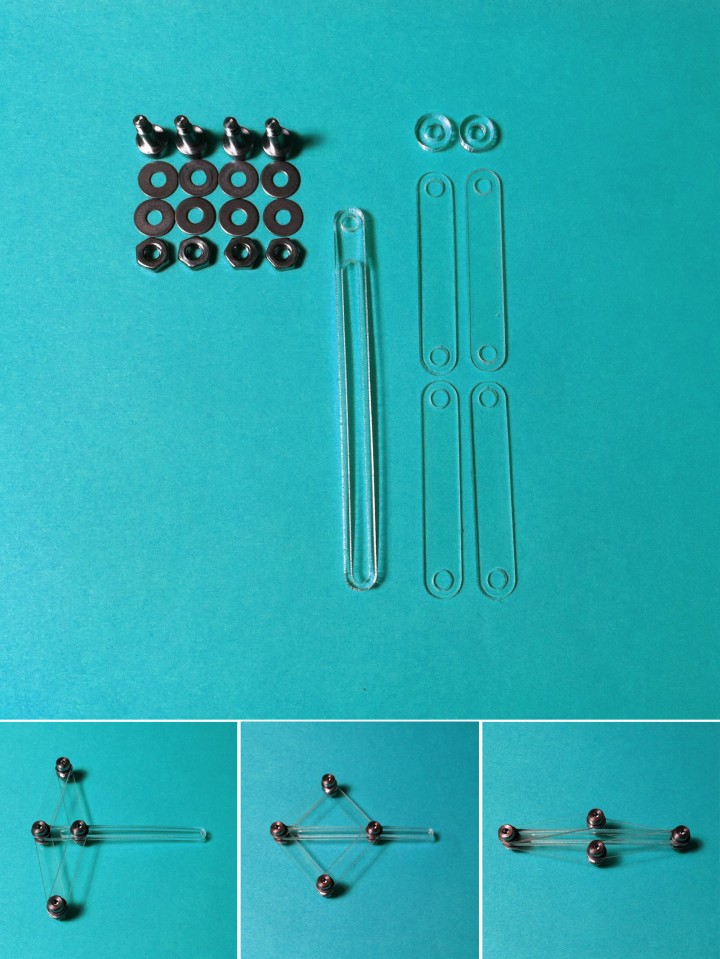Auxetic Origami Surface [AOS-1]
 Installing the first version of the AOS prototype in the
gallery of Rudolph Hall at the Yale School of Architecture.
Installing the first version of the AOS prototype in the
gallery of Rudolph Hall at the Yale School of Architecture.
 Sequential activation of the AOS. Below each photo
is visualization of the AOS digital interface showing the light
readings for the past 10 seconds and the state of each motor.
Sequential activation of the AOS. Below each photo
is visualization of the AOS digital interface showing the light
readings for the past 10 seconds and the state of each motor.
 Exploded axonamotric of the actuation mechanism.
Exploded axonamotric of the actuation mechanism.
 Assembled actuation mechanism w/ origami module in open and
collapsed positions.
Assembled actuation mechanism w/ origami module in open and
collapsed positions.
 Amir & Chris busy folding, assembling and coding the AOS-1.
Amir & Chris busy folding, assembling and coding the AOS-1.
Testing the photo-sensor and servo actuation with an individual origami module on the AOS-1 armature.
 Early laser-cut prototype of a scissor mechanism with
stainless-steel hardware.
Early laser-cut prototype of a scissor mechanism with
stainless-steel hardware.
Hello,
I love your project.
I have a query that what is that you have analysed in the sheets above?